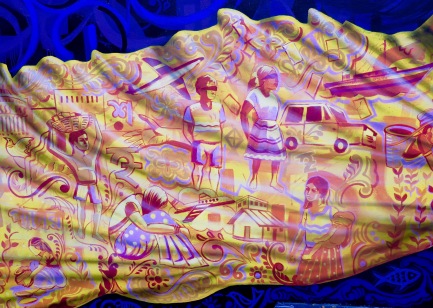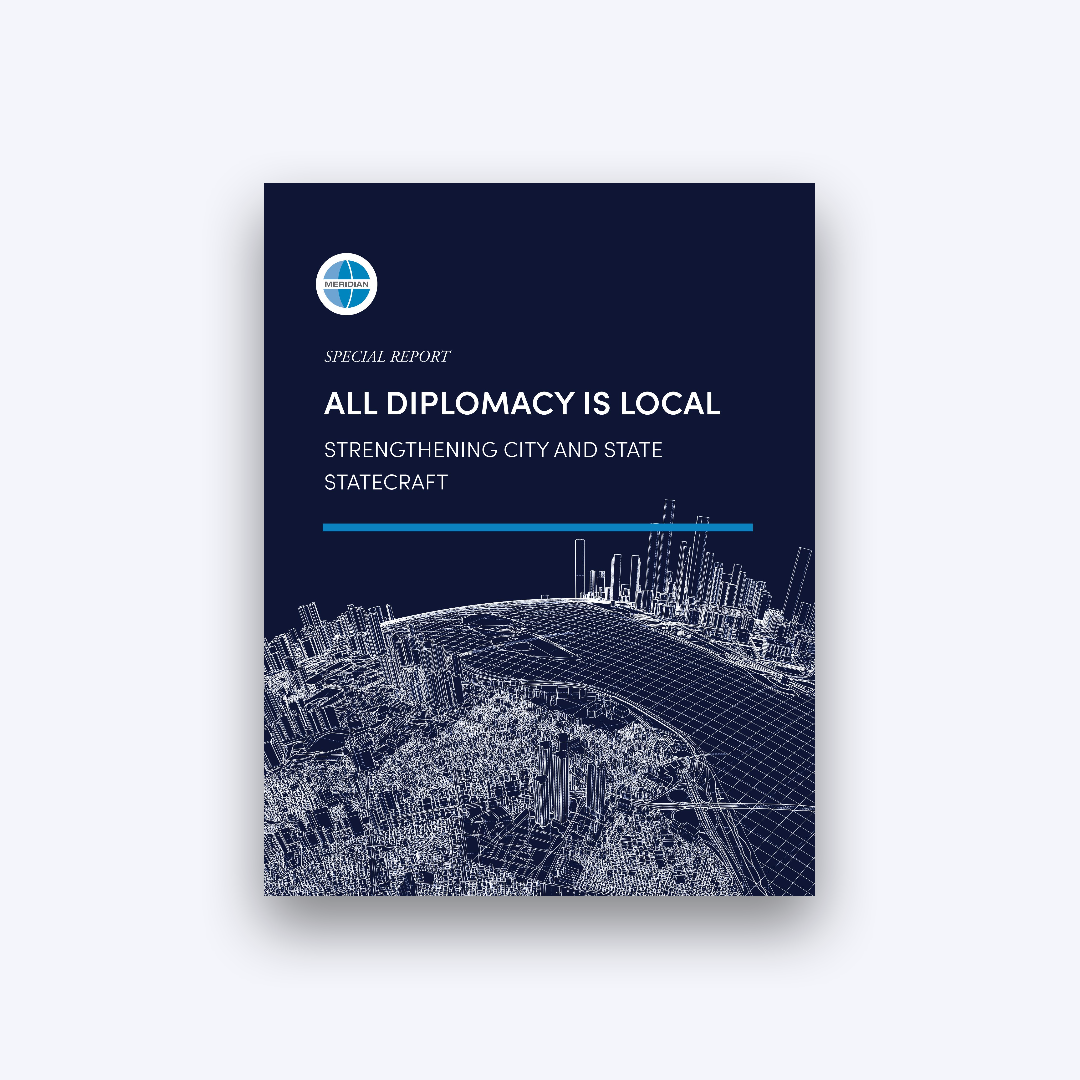This blog was written by Joel Bergner, who recently went to India as part of Meridian’s Community Engagement through the Arts program:
Looking at a map of India’s eastern state West Bengal, one will notice that it has an unusual shape. At the top, a tiny sliver of land shoots hundreds of kilometers north, like a little tree growing out of rest of the state, which includes the capital city of Kolkata and the iconic Ganges River. This sliver pushes up into the Himalayas, and borders on Nepal, Bhutan and Bangladesh, not far from Chinese-controlled Tibet. It is a fascinating place, with incredible mountainous views, the world-famous Darjeeling tea fields and Buddhist and Hindu temples spotting the landscape. However, it was none of these things that brought me here, to the small city of Siliguri. Upon arrival, I met with my team of local artists and Nishi Kant, director of the Indian NGO Shakti Vahini, who educated us on the situation here.

Underneath the physical and cultural beauty lies a tragic reality; this area is the epicenter for human trafficking in South Asia, where tens of thousands of people a year are taken from their communities here or from neighboring countries, where they are trafficked through Siliguri on their way to their various destinations throughout India and beyond. Also known as modern-day slavery, this issue takes many forms. Women and underage girls are sold into sex slavery in brothels across the region, while some are forced to marry older men. Others are sold into forced labor, with females usually ending up as domestic maids and males as agricultural laborers. Violent and powerful, international organized crime rings control this lucrative business, with tactics that include offering impoverished, vulnerable people with “golden opportunities” to work in supposedly legitimate jobs, their victims only realizing their fate once it’s too late. Others are simply snatched from the street by men driving by in cars, never to be seen again.

Combatting this crisis requires the tireless dedication and coordination of many societal actors, including NGOs, law enforcement, the Indian government and the international community, many of whom came together in Siliguri in February of 2016 for the International Anti-Human Trafficking Conclave. Organizers included the US Consulate in Kolkata and Shakti Vahini, dedicated to ending trafficking and supporting the survivors in their struggle to re-integrate with society and combat the stigma that they often face once they return to their communities. As part of the conclave, my team of artists and I were to paint a large-scale public mural in a highly visible location in order to raise awareness for this issue.
As Nishi explained to me, one of the most important aspects of fighting trafficking is educating the public and enlisting them in the struggle. Ordinary citizens must understand what it is and recognize it when it takes place in their community. They need to have the information about who to inform when a girl disappears, understand that not every job offer is legitimate, and have compassion for returning survivors of trafficking, rather than rejecting them. For this reason, artists have an important role to play.


The main figure in our mural is a woman who had been trafficked, named Sangeeta. She is a dancer and works with the organization Kolata Sanved, which uses dance as a form of therapy for trafficking survivors. As part of this work, photographer Brooke Shaden partnered with the women and girls to create a series of photographic self-portraits in which they each chose a pose that they felt represented their stories. Sangeeta portrayed herself having her ankle gripped by a menacing hand, while she reached toward another hand for support. When Kolata Sanved collaborator Laura Price showed me this photograph, I was moved by the image and the story behind it, and received permission to use it as the central figure in the mural.

Inside Sangeet’s sari, the artist team, who included the four Kolkata-based painters Anindya, Saptarshi, Santanu and Binod, depicted the variety of issues that surround human trafficking. Interwoven throughout the piece are images from Bengali folkloric art. Working with this talented team was a great experience for me. We painted together, learned about each others’ lives and cultures, and ate lunch together at a nearby local Bengali outdoor eatery, where the artists taught me how to eat in the traditional Indian manner: with your hand, which requires a special technique when eating foods like rice and daal, a chickpea dish. When the mural was complete, we took a day trip up through the Himalayan mountains, to the breathtaking city of Darjeeling. Later, while working together on another project in Kolkata, my wife and I had the opportunity to visit their homes and meet their families; a real honor!

On the opening day of the International Anti-Human Trafficking Conclave, dozens of people gathered in front of the mural. Local musicians and dancers performed, including a group of women dancers who had also survived the trafficking experience. It was an inspiring moment to witness the power of people who had gone through so much, yet were determined to be part of the solution and support others who had suffered. Thanks to everyone involved in making this mural project such a successful, positive experience: The Meridian International Center, Shakti Vahini, the US Consulate in Kolkata and my four amazing artist collaborators.





















